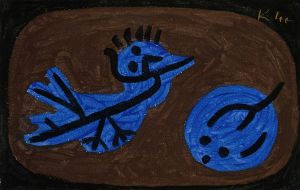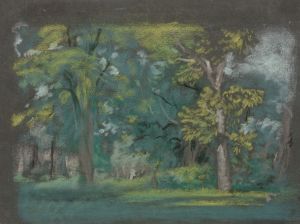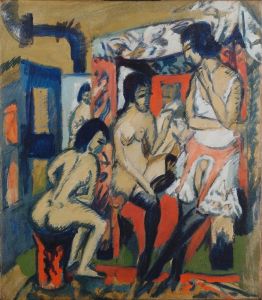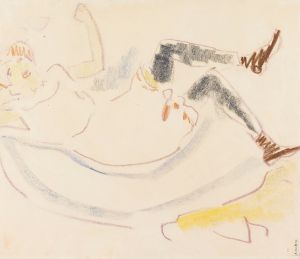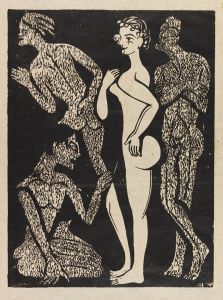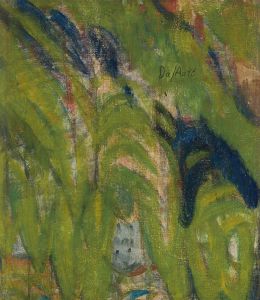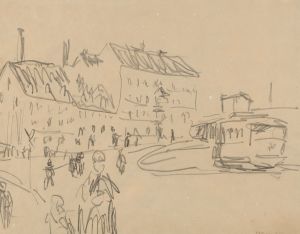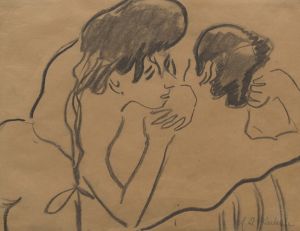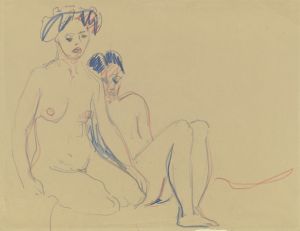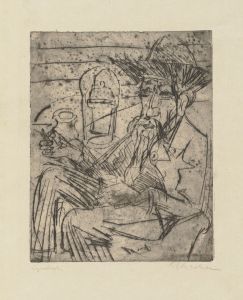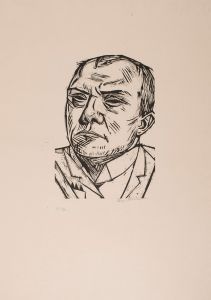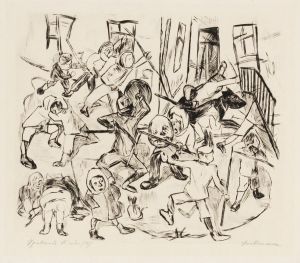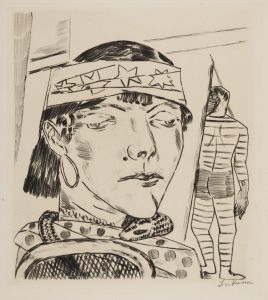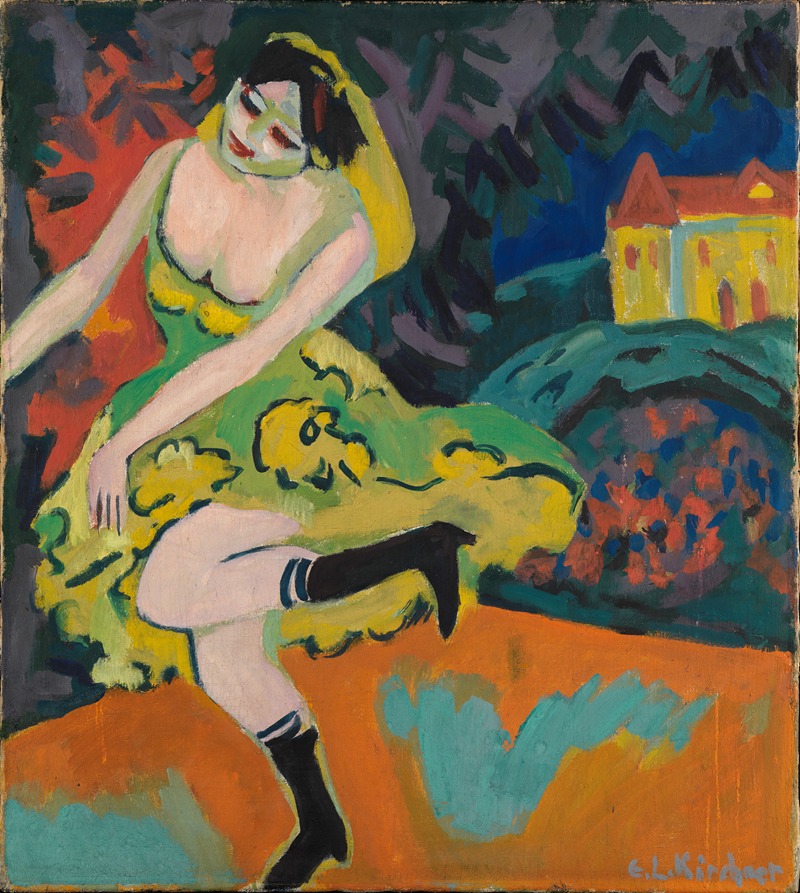
Varietétänzerin
A hand-painted replica of Ernst Ludwig Kirchner’s masterpiece Varietétänzerin, meticulously crafted by professional artists to capture the true essence of the original. Each piece is created with museum-quality canvas and rare mineral pigments, carefully painted by experienced artists with delicate brushstrokes and rich, layered colors to perfectly recreate the texture of the original artwork. Unlike machine-printed reproductions, this hand-painted version brings the painting to life, infused with the artist’s emotions and skill in every stroke. Whether for personal collection or home decoration, it instantly elevates the artistic atmosphere of any space.
Ernst Ludwig Kirchner, a prominent German expressionist painter and one of the founding members of the artist group Die Brücke, created the painting "Varietétänzerin" (translated as "Variety Dancer") in 1910. This work is a vivid example of Kirchner's exploration of modern urban life and his fascination with the dynamic energy of the city, particularly Berlin, where he moved in 1911.
"Varietétänzerin" captures the essence of the cabaret and variety shows that were popular in early 20th-century Germany. These performances were characterized by their lively and often provocative nature, reflecting the cultural vibrancy and social changes of the time. Kirchner's painting depicts a female dancer, a common subject in his work, showcasing his interest in the human figure and movement.
The painting is notable for its bold use of color and dynamic composition, hallmarks of Kirchner's style. He employed a vivid palette, using strong contrasts and expressive brushstrokes to convey the energy and excitement of the performance. The dancer is portrayed with exaggerated features and elongated limbs, emphasizing movement and the fluidity of the dance. This approach aligns with the expressionist movement's focus on emotional experience rather than realistic representation.
Kirchner's work often reflects his interest in the psychological aspects of modern life, and "Varietétänzerin" is no exception. The painting can be seen as a commentary on the changing roles of women in society and the liberation of social norms during the Weimar Republic era. The dancer, as a subject, symbolizes both the allure and the transience of modernity, capturing the spirit of a society in transition.
"Varietétänzerin" also demonstrates Kirchner's influence from non-European art forms, particularly African and Oceanic art, which he admired for their perceived authenticity and emotional depth. This influence is evident in the simplified forms and the emphasis on the expressive potential of line and color.
The painting is part of Kirchner's broader body of work that explores themes of urban life, modernity, and the human condition. His portrayal of dancers, cityscapes, and street scenes provides insight into the cultural and social dynamics of early 20th-century Germany. Kirchner's work, including "Varietétänzerin," has had a lasting impact on the development of modern art, influencing subsequent generations of artists.
Today, "Varietétänzerin" is held in high regard as an important example of German expressionism. Kirchner's ability to capture the zeitgeist of his time through his innovative use of color and form continues to be celebrated in art historical circles. His work remains influential, offering a window into the complexities and contradictions of modern urban life.





